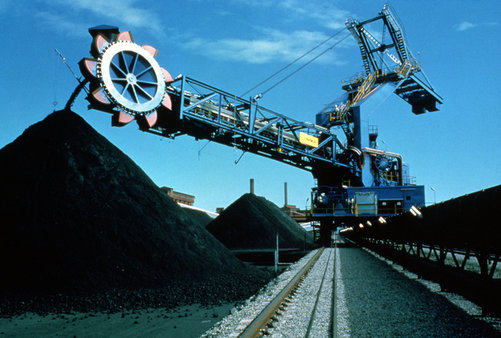
A new legal challenge to the proposed Carmichael coal mine – Australia’s largest – will test in the federal court whether climate change caused by greenhouse gas emissions should be taken into account when assessing prospective coal licences in Australia.
The challenge, by the New South Wales Environmental Defenders Office on behalf of the Mackay Conservation Group, will argue that federal environment minister Greg Hunt failed to take into account the climate impact of greenhouse gases emitted by the burning of coal from the Carmichael mine when assessing whether to grant its licence.
It cites the impact of global warming on the Great Barrier reef, an area of world and national heritage, as a relevant consideration which the minister should have been taken into account.
So could the challenge be successful?
Australia’s largest coalmine
The Carmichael coal mine, proposed by Indian company Adani, is set to operate for 60 years and is predicted to emit more than 200 million tonnes of greenhouse gas throughout its lifetime. It received federal approval in July 2014.
The project includes an open cut and underground coal mine and a 189 km rail link to transport the coal from the Galilee Basin to Abbot Point, near the Great Barrier Reef.
The future of coal mining in the Galilee Basin has become a point of significant policy difference ahead of the Queensland election on January 31. The current Liberal National government has pledged “hundreds of millions of dollars” to partly fund new coal infrastructure in the Galilee Basin. The Labor opposition has now pledged to scrap that “unprecedented” taxpayer-funded offer to Adani if it wins the election.
Under the environmental assessment process, Hunt accounted for greenhouse gas emissions from extracting and transporting the coal, but not from burning it. Predictions suggest that this could produce an extra 130 million tonnes of greenhouse gases over the mine’s lifetime – a quarter of Australia’s annual emissions.
The court case will challenge the orthodox approach to the assessment of coal mine approvals. Emissions from burning coal have, to date, been largely considered too indirect and difficult to measure, and have therefore been left out of the assessment process.
What does the law say?
The court challenge particularly relates to a section of the Environment Protection and Biodiversity Conservation (EPBC) Act, the national environmental legislation.
Section 136 of the act states that assessments must take into account international principles of ecological sustainability, meaning that for projects that impact areas of national environmental significance, consideration must be given to concepts such as the needs of future generations and the precautionary principle.
The NSW Environmental Defenders Office has argued that these principles necessarily require Hunt to consider the climate change impact of emissions from the burning of coal when deciding whether to approve a mine licence.
What’s happened in other cases?
Other cases have taken a mixed approach to the question of these so-called “downstream” greenhouse gas emissions.
In 2004 the Federal Court, in assessing the Nathan Dam project, ruled that an “impact” is not confined to direct physical effects of the action on the matter protected by the EPBC Act, but rather that it should also include closely related indirect effects.
In 2006, however, a court ruling relating to the development of a new coal mine near Moranbah, Queensland, held that greenhouse gas emissions from mining, transporting or burning coal in other parts of the world should not be taken into account when assessing a mining licence because their impact is too indirect to be specifically connected to the project.
But later in 2006, in a case relating to an extension application for the Anvill Coal Mine in New South Wales, the Federal Court held that the impact of greenhouse gas emissions from burning coal does come within the scope of the EPBC Act and should be assessed, despite the fact that emissions are difficult to measure, that climate change is caused by a range of different contributors, and that greenhouse gas emissions were often the product of voluntary and independent human action.
The judge ruled that a failure to take account of climate change and global warming caused by increased greenhouse gas emissions amounted to a breach of the international principles of ecologically sustainable development.
Crucial context
These decisions provide a crucial backdrop for the Carmichael mine case. In light of the dire predictions in the latest report by the Intergovernmental Panel on Climate Change regarding the anticipated impacts of climate change and global warming, increased greenhouse gas emissions from burning coal clearly have the potential to devastate precious world and national heritage areas like the Great Barrier Reef.
It’s now up to the Federal Court to decide whether the national environmental legislation should be interpreted restrictively. A restrictive approach would ensure that the assessment of large coal mining projects such as the Carmichael mine includes considerations of how climate change and global warming, indirectly caused by the greenhouse gas emissions that flow from the project, will affect the long-term ecological future of areas of national environmental significance.
Source: The Conversation. Reproduced with permission.










